Like many New Zealanders my wife and I have seen the world but have not really spent much time getting to know our own country. So, one of our “bucket list” items is to do more traveling around New Zealand – partly for nostalgic reasons (to revisit places that hold a special memory) and partly to see places we have never managed to get to before.
Our latest foray into unknown New Zealand has taken us to the outer edge of the Marlborough Sounds.
The motivation was to visit my sister and her husband who live in a place called Ngaio Bay which is just a few kilometers back from the settlement of French Pass. French Pass is a notorious stretch of water between the mainland and D’Urville Island and when the tide is running at its fullest it is a maelstrom. Apparently, at the height of the tidal flow a large whirlpool develops in the gap and a game for the local youngsters is to throw something that will float into the whirlpool – it promptly disappears into a “black hole” and is apparently spewed back to the surface several kilometers away.
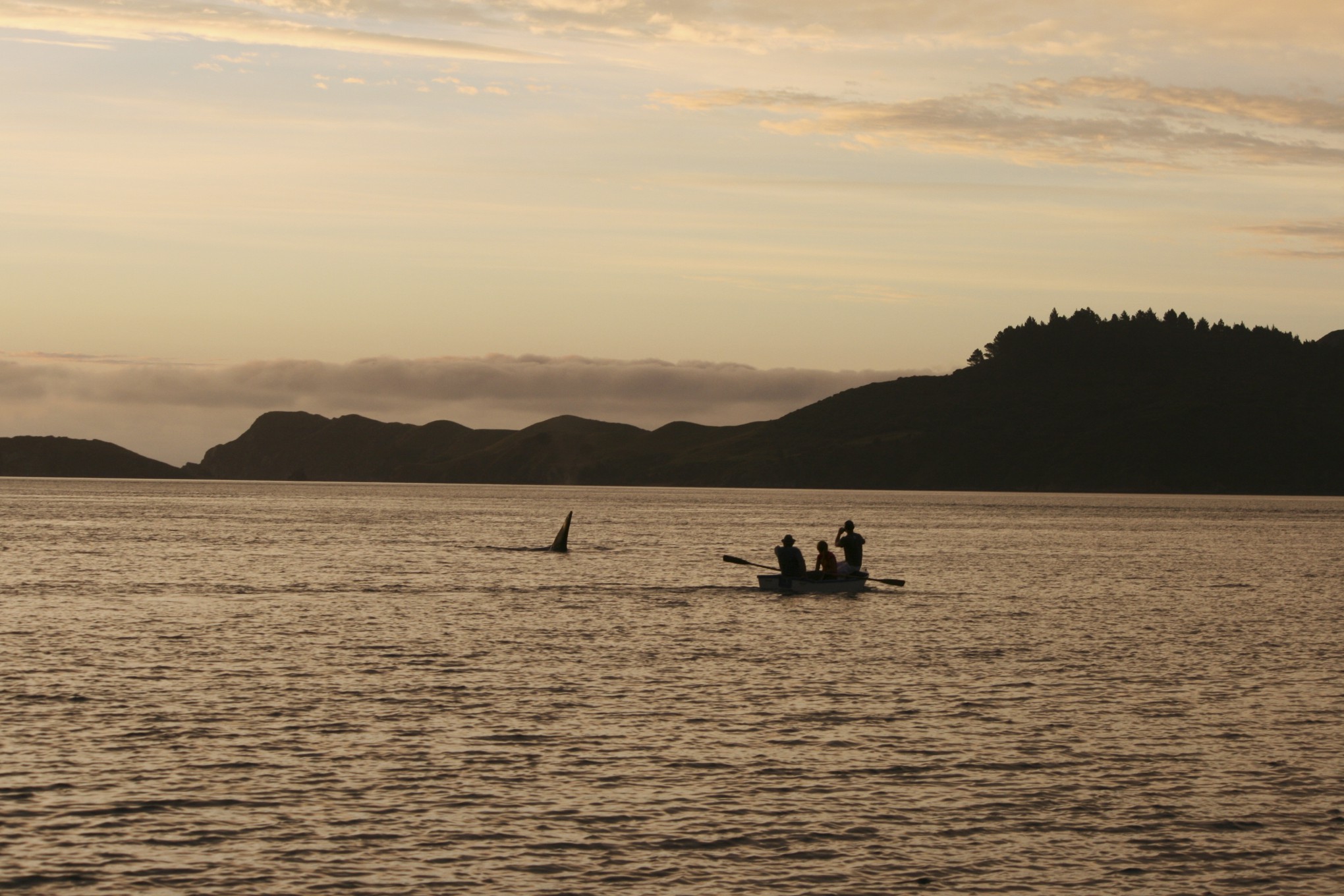 Getting to Ngaio Bay was for us quite a mission – although my sister does it at least once a week without turning a hair. We turned off the main road at Rai Valley – on the highway from Nelson to Blenheim – and then traveled for about 30 minutes on a very windy tar-sealed road to the settlement of Okiwi Bay. At that point, we abandoned our car and went the rest of the way in my sister’s 4-wheel drive. From then on, the access used to be by a dirt road – however, civilization has gradually encroached and the road was first shingled and has now been tar-sealed for about 2/3s of the journey to Ngaio Bay. The tar seal is advancing year by year. However, it is apparently not uncommon to see campervans on the road to French Pass which must be a bit hair-raising for the drivers.
Getting to Ngaio Bay was for us quite a mission – although my sister does it at least once a week without turning a hair. We turned off the main road at Rai Valley – on the highway from Nelson to Blenheim – and then traveled for about 30 minutes on a very windy tar-sealed road to the settlement of Okiwi Bay. At that point, we abandoned our car and went the rest of the way in my sister’s 4-wheel drive. From then on, the access used to be by a dirt road – however, civilization has gradually encroached and the road was first shingled and has now been tar-sealed for about 2/3s of the journey to Ngaio Bay. The tar seal is advancing year by year. However, it is apparently not uncommon to see campervans on the road to French Pass which must be a bit hair-raising for the drivers.
The final section is a private road down the hill to Ngaio Bay itself. This section really is hair-raising and I would think twice about trying to drive the road myself, particularly without 4-wheel drive. The access road was carved out by bulldozer when Judy and Rodger first came to settle in the Bay.
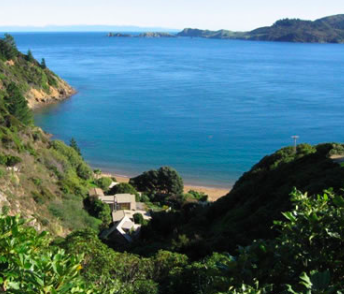 Ngaio Bay consists of a small secluded beach at the foot of a gully running from the ridge of the peninsular. My sister and her husband (Judy and Roger Sonneland) are the only inhabitants and it is a Robinson Crusoe like situation. There is no sign of any other civilization and they appear to be very self-contained. However, that is a bit of an illusion as there are several settlements along the peninsular and several of the many other bays are also occupied. They also have mains power.
Ngaio Bay consists of a small secluded beach at the foot of a gully running from the ridge of the peninsular. My sister and her husband (Judy and Roger Sonneland) are the only inhabitants and it is a Robinson Crusoe like situation. There is no sign of any other civilization and they appear to be very self-contained. However, that is a bit of an illusion as there are several settlements along the peninsular and several of the many other bays are also occupied. They also have mains power.
A stream trickles down the hill and this is fed by a spring which has apparently never dried up, even in the driest of years. So, Roger and Judy are in the fortunate situation of having pure, soft, spring water on tap whenever they want it, including water for the garden. Water is drawn from a pool below the spring into a header tank, and from there into a large storage tank. Like everything else in the Bay, the platform for the storage tank had to be dug out of the side of the hill.
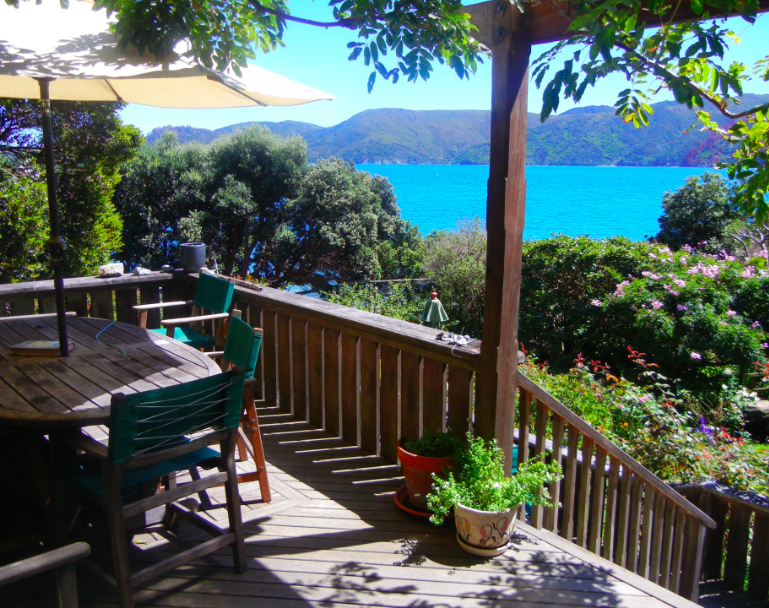 The main house is close to the beach and really does have a Robinson Crusoe look about it. Much of the timber in the house was hewn from locally felled macrocarpa trees, and the house has grown in fits and starts as the family has increased. A sheltered garden has been developed and the Sonnelands really grow an amazing range of vegetables and fruit. Fish is an important part of the staple diet and the story is told that all you have to do is push the boat out 100m or so, throw two hooks over the side, and the blue cod which are the -prevalent fish in the area virtually throw themselves on the hooks to be hauled up.
The main house is close to the beach and really does have a Robinson Crusoe look about it. Much of the timber in the house was hewn from locally felled macrocarpa trees, and the house has grown in fits and starts as the family has increased. A sheltered garden has been developed and the Sonnelands really grow an amazing range of vegetables and fruit. Fish is an important part of the staple diet and the story is told that all you have to do is push the boat out 100m or so, throw two hooks over the side, and the blue cod which are the -prevalent fish in the area virtually throw themselves on the hooks to be hauled up.
We had freshly caught, sautéed blue cod the night we were there and I have to say it is the nicest fish I have ever eaten.
Everything electronic has to come in by satellite – including TV and internet – which costs an arm and a leg. I guess that is part of the price of living in such an isolated spot.
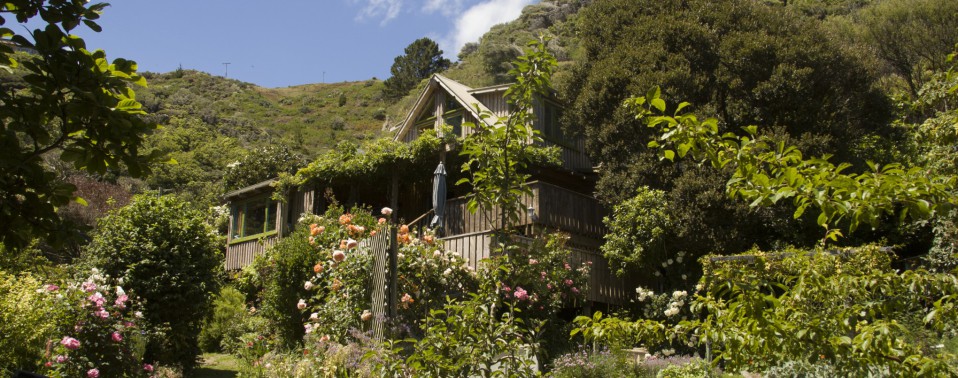
Halfway up the hill is a guesthouse which is let out to guests, particularly over the summer months, where Pen and I stayed. The guest house is relatively modern and quite delightfully furnished. The main bedroom looks directly out over the terrace which has a glass balustrade and gives you a view to die for. The night we were there it was still, the water was absolutely calm and the sunset incredible – as was the view.
There are fascinating tales of what Roger and Judy and to go through to get everything built. All the material had to be brought in by truck and the truckies showed amazing skill in navigating the seemingly impassable entry road. I suspect the whole experience would have been worthy of a TV programme.
We saw Ngaio Bay under the best possible conditions. However, like most coastal situations in New Zealand, it is vulnerable to the weather when it turns nasty. Apparently Ngaio Bay caught the full force of Cyclone Bola at the time that it devastated Gisborne and it took several months to deal with the damage.
After a night and a day, we were on our way out to civilization again. We were lucky to be there when Ngaio Bay was at its best. The weather was balmy and calm and the beach full of sand (it can be rocky at times with the sand coming and going depending on the conditions). Whether we will get back there again I don’t know but it was certainly an experience not to be missed.
By Bas Walker
This is another of Bas Walker’s posts on GrownUps. Please look out for his articles, containing his Beachside Ponderings.
Photos from Ngaio Bay Ecostay Bed and Breakfast







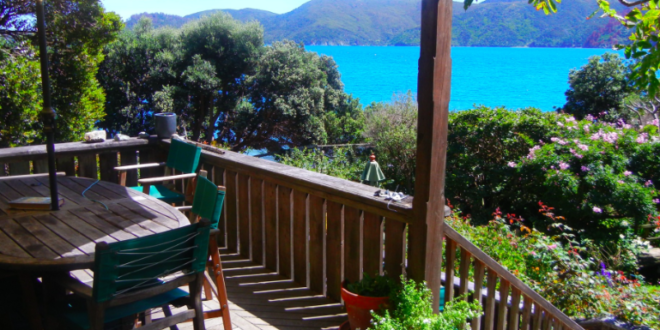
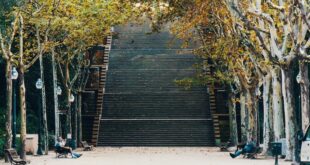
Join the Discussion
Type out your comment here:
You must be logged in to post a comment.